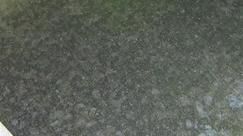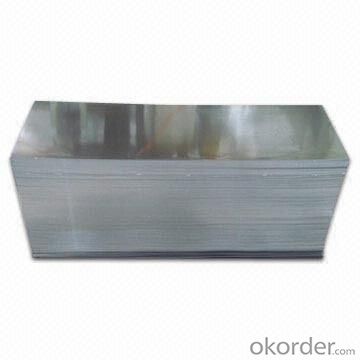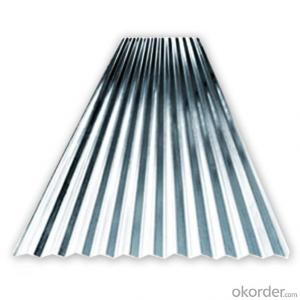Hot dip galvanized steel sheet regular spangle
- Loading Port:
- Shanghai
- Payment Terms:
- TT OR LC
- Min Order Qty:
- 25 m.t.
- Supply Capability:
- 10000 m.t./month
OKorder Service Pledge
OKorder Financial Service
You Might Also Like
Quick Details
| Standard: | ASTM, GB, JIS | Grade: | SGCC. SGCH. DX51D+Z. JIS G3302 | Thickness: | 0.15mm-5.0mm |
| Place of Origin: | China (Mainland) | Brand Name: | CNBM | Type: | Steel Coil |
| Technique: | Cold Rolled | Surface Treatment: | Galvanized | Application: | Roofing sheet and PPGI Base and Building Materials |
| Special Use: | High-strength Steel Plate | Width: | 600mm-1250mm | Length: | Customized |
Packaging & Delivery
| Packaging Details: | Export Packing |
| Delivery Detail: | 30 Days |
Galvanized Steel Coil



Specifications:
Thickness: 0.13mm TCT up to 5.0mm TCT.
Width: 600mm up to 1250mm.
Zinc Coating: 40-450G/M2.
Chromated, Dry, Skin-passed, Tension Level, Shining. Oiled or Unoiled.
Regular Spangle, minimum Spangle, Large Spangle, Zero Spangle.
Temper: Full Hard (85-95 HRB; G550). Commercial Quality (50-75 HRB; G350).
Coil Weight: 3-6 MT.
Coil ID: 508mm or 610mm.
Shipment: By Bulk or By 20GP Container.
Waterproof Standard Export Packing.
Payment Terms: by T/T or L/C at Sight.
Delivery: 30 Days.
PACKING
4 eye bands and 4 circumferential bands in steel, galvanized metal fluted rings on inner and outer edges, galvanized metal & waterproof paper wall protection disk, galvanized metal & waterproof paper around circumference and bore protection
FAQ
We have organized several common questions for our clients,may help you sincerely:
1)How to guarantee the quality of the products?
We have established the international advanced quality management system,every link from raw material to final product we have strict quality test;We resolutely put an end to unqualified products flowing into the market. At the same time, we will provide necessary follow-up service assurance.
2)How long can we receive the product after purchase?
In the purchase of product within 20-25 days, we will arrange the factory delivery as soon as possible. The pacific time of receiving is related to the state and position of customers. Commonly 15 to 30 days can be served.
3)Do you have necessary certificate or inspection to make sure we can import smoothly?
Syringes are CE,FDA approved. And we supplied main nations in the world.
- Q:Can steel sheets be bent or formed into different shapes?
- Yes, steel sheets can be bent or formed into different shapes through various processes such as heating, rolling, or using specialized machinery like press brakes.
- Q:How do you calculate the square footage of a ton of steel?
- The width of the sheet is 500~1500 mm; the thickness is 600~3000 mm. According to the type of steel sheet, ordinary steel, stainless steel, alloy steel, spring steel, stainless steel, tool steel, heat-resistant steel, bearing steel, silicon steel and industrial pure iron sheet; according to professional use, with drums board, enamel board, bulletproof plate; surface coating and plating, plating with zinc thin plate, tin plate, plating lead sheet, plastic composite plate
- Q:Are steel sheets suitable for high-humidity environments?
- Yes, steel sheets are generally suitable for high-humidity environments. Steel is a corrosion-resistant material, and when properly coated or treated, it can withstand prolonged exposure to moisture without significant degradation. However, it is important to ensure proper maintenance and periodic inspections to prevent any potential rust or corrosion.
- Q:What is the process of applying anti-fingerprint coatings to steel sheets?
- The process of applying anti-fingerprint coatings to steel sheets typically involves several steps. First, the steel sheets are thoroughly cleaned to ensure there is no dirt, grease, or any other contaminants on the surface. This cleaning process may involve using solvents or chemical cleaners. Once the sheets are clean, a primer or base coat is applied to enhance adhesion of the anti-fingerprint coating. The primer is usually a thin layer that helps the subsequent coating adhere to the steel surface more effectively. After the primer has dried, the anti-fingerprint coating is applied. This coating is specifically designed to repel fingerprints, smudges, and other marks that can easily appear on steel surfaces. The coating is typically sprayed or rolled onto the steel sheets in a controlled environment to achieve a uniform and consistent coverage. Once the coating is applied, the steel sheets are usually cured or dried at specific temperature and time conditions to ensure proper bonding and durability of the anti-fingerprint coating. This curing process helps the coating to fully harden and form a protective layer on the steel surface. Overall, the process of applying anti-fingerprint coatings to steel sheets involves surface cleaning, primer application, anti-fingerprint coating application, and curing to achieve a durable and effective protective layer.
- Q:How do steel sheets perform in terms of UV resistance?
- Steel sheets generally have poor UV resistance. The metal tends to oxidize and degrade when exposed to ultraviolet (UV) radiation from sunlight, leading to corrosion, discoloration, and loss of strength over time. To enhance UV resistance, manufacturers often apply protective coatings or paint to the steel sheets.
- Q:What are the common thicknesses for galvalume steel sheets?
- The common thicknesses for galvalume steel sheets typically range from 0.018 inches to 0.125 inches.
- Q:How can steel sheets be protected from rusting?
- There are various methods available to protect steel sheets from rusting. One common approach involves applying a protective coating on the surface of the steel. This can be achieved by using a corrosion-resistant paint or employing a galvanizing process. In the galvanization process, a layer of zinc is applied to the steel sheets, acting as a barrier against moisture and preventing direct contact with oxygen and water. Consequently, the risk of rust formation is reduced. Another effective method to prevent rusting is the use of corrosion inhibitors. These inhibitors can be added to the water or oil used for cooling or lubricating the steel sheets. By doing so, a protective film is formed on the surface, acting as a barrier against corrosion. Proper maintenance and storage of steel sheets are crucial in preventing rust formation. It is important to keep the sheets in a dry environment and avoid exposing them to moisture and harsh chemicals. By following these practices, the lifespan of the steel sheets can be extended, and rusting can be prevented. Additionally, opting for stainless steel sheets is another effective way to avoid rusting. Stainless steel contains a high amount of chromium, which forms a passive protective layer on the surface. This layer acts as a shield against corrosion, thereby preventing rust formation. In conclusion, protecting steel sheets from rusting requires a combination of protective coatings, corrosion inhibitors, proper storage, and maintenance. By implementing these measures, the durability and functionality of the steel sheets can be significantly extended.
- Q:What are the different sizes of steel sheets available?
- Steel sheets are available in a wide range of sizes, catering to various applications and industries. The sizes of steel sheets can vary depending on factors such as thickness, width, and length. In terms of thickness, steel sheets are commonly available in gauges ranging from 7 to 30. The higher the gauge number, the thinner the sheet. Thinner sheets, such as those with a gauge of 30, are often used for applications that require flexibility, while thicker sheets, such as those with a gauge of 7, are typically used for heavy-duty applications that require high strength and durability. When it comes to width, steel sheets are available in a range of options. The most common widths include 36 inches, 48 inches, and 60 inches. However, customized widths can be obtained for specific requirements. Regarding length, steel sheets are typically available in standard lengths of 96 inches and 120 inches. These lengths are commonly used in various industries. However, like width, the length can also be customized to fit specific needs. It is important to note that the availability of different sizes of steel sheets may vary depending on the supplier and the specific grade of steel being used. It is advisable to consult with a steel sheet supplier or manufacturer to determine the exact sizes available for a particular application.
- Q:What is the typical weight of steel sheets?
- The typical weight of steel sheets can vary depending on the thickness and dimensions of the sheet. However, a commonly used gauge for steel sheets is 16 gauge, which typically weighs around 40 to 50 pounds per square foot.
- Q:What are the different types of steel sheet finishes for industrial applications?
- There are several types of steel sheet finishes commonly used in industrial applications, including hot rolled, cold rolled, galvanized, and coated finishes.
1. Manufacturer Overview |
|
|---|---|
| Location | |
| Year Established | |
| Annual Output Value | |
| Main Markets | |
| Company Certifications | |
2. Manufacturer Certificates |
|
|---|---|
| a) Certification Name | |
| Range | |
| Reference | |
| Validity Period | |
3. Manufacturer Capability |
|
|---|---|
| a)Trade Capacity | |
| Nearest Port | |
| Export Percentage | |
| No.of Employees in Trade Department | |
| Language Spoken: | |
| b)Factory Information | |
| Factory Size: | |
| No. of Production Lines | |
| Contract Manufacturing | |
| Product Price Range | |
Send your message to us
Hot dip galvanized steel sheet regular spangle
- Loading Port:
- Shanghai
- Payment Terms:
- TT OR LC
- Min Order Qty:
- 25 m.t.
- Supply Capability:
- 10000 m.t./month
OKorder Service Pledge
OKorder Financial Service
Similar products
New products
Hot products
Related keywords






























